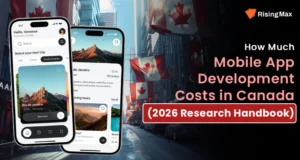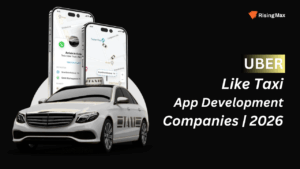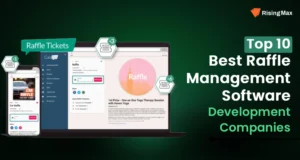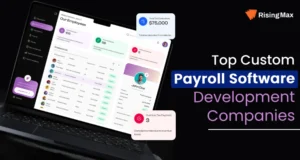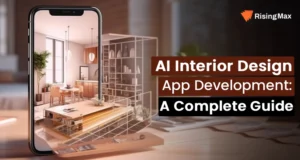In the corporate world, the use of chatbots is on the rise. It is now a common buzzword in business practice. Businesses increasingly turn to them for help, expecting them to enhance customer service in many sectors over the next few years. From improved communication to enhanced customer experience, a chatbot service allows a business to connect with a million customers effectively. Building a highly functional chatbot has been a necessity for many businesses because delivering an enhanced customer experience is more challenging than ever. Here in this post, we will provide you the necessary information and resources you need in the chatbot development process for your business advantage.
But let us first understand what an AI chatbot is, how it works and what are the types of AI chatbots.

What Is An AI Powered Chatbot?
Chatbots can mimic human conversations in their most natural form, whether that be text (since the advent of bots) or spoken language, using artificial intelligence (AI) methods like Natural Language Processing (NLP) and audio analysis. Any AI-powered chatbot has a key feature of being dynamic.
AI-powered bots can learn from their past conversations to improve their ability to have in-depth and nuanced discussions.
Types of Chatbots
There are primarily two types of AI Chatbots: Transactional Chatbot, Conversational Chatbot.
1. Transactional Chatbot
Transactional chatbot offers only a limited number of options to the customer. Customers can narrow their choices to those most applicable if they have a specific task or problem in mind. The chatbot will guide the customer step-by-step until it answers their inquiry or resolves their problem after they choose one of the available options.
Chatbots can greatly benefit businesses like restaurants, online delivery services, and banks that anticipate customers’ most common needs and provide those solutions.
2. Conversational Chatbot
A conversational chatbot comprehends and carries on a conversation in a natural and seemingly human way. This type of chatbot understands the user’s query and responds appropriately with the help of AI, knowledge bases, and other information.
Advanced SaaS tool providers, B2B enterprise solution providers, and social media websites use this type of chatbot.
Other Types of AI Chatbots Include
Although there are only two types of business chatbots. But there are other business chatbot solutions based on use cases and technology employed.
NLP Enabled Chatbots: The most advanced chatbots that help deliver an enhanced experience to users. By understanding the meaning of the customer’s entered query, they provide conversation in real-time. A smooth conversation further helps boost business sales.
Voice Bots: AI and natural language understanding (NLU) power voice bots to convert spoken words into written text and vice versa. Artificial intelligence picks out important conversation cues and determines how to respond best. The text-to-speech (TTS) engine converts the text into voice after starting the conversation. Our expert designers at RisingMax have designed these chatbots to mimic human conversational behavior in every respect. AI Voice assistants, also known as voice chatbots, easily integrate with other customer service tools like IVRs, self-service portals, and online knowledge bases, offering a complex communication model.
Generative Chatbots: Generative chatbots generate responses independently instead of using a database of predefined responses with the help of Generative AI. They can generate new, interactive responses in response to user input. Developers and trainers may find developing and training generative chatbots more challenging due to their flexibility and creative responses.
Hybrid Chatbots: A hybrid chatbot will initiate an automated chat conversation with the user and attempt to answer their question as simply and quickly as possible. A human customer service representative can intervene at any time or in any topic area where the chatbot cannot handle inquiries independently.
Menu-Based Chatbots: The most basic form of this technology available today is menu-driven chatbots. Chatbots typically present the user with menu options following a predetermined decision tree. The user needs to go through a series of steps, selecting options that seem like the best fit, to arrive at the desired result, similar to the automated dial pad menus on telephones.
Task-Oriented Chatbots: Task-oriented chatbots include appointment-scheduling bots, customer service assistants, and restaurant reservation systems. They specialize in one task, and the functions they perform are limited.
Unlock the potential of AI chatbots for your business. Explore now and be at the forefront of 2026’s biggest innovations.
How Does An AI Chatbot Work?
The chatbot’s advanced artificial intelligence allows it to respond to questions in natural language as a real person. It responds to user queries generated with pre-programmed scripts and machine learning algorithms. When prompted with a question, the chatbot will provide an answer based on the information in its current knowledge base.
Till now, you must have learned interesting facts about AI chatbots and how it works. But why must businesses implement it to their operations? Let us know some use cases and benefits of AI chatbots.
Also Read: Artificial Intelligence Business Ideas
Industry Use Cases Of AI Chatbots
AI chatbots have a wide range of applications across various industries. Here are some industry-specific use cases for AI chatbots:
Retail and E-commerce
- Customer Support: AI chatbots answer frequently asked questions, process returns, and provide shipment tracking updates.
- Product Recommendations: Recommend & suggest products based on the user’s browsing history or preferences.
- Shopping Assistance: Assist customers in finding products and completing purchases.
Banking and Financial Services
- Account Information: Chatbot provides account balances, transaction histories, and credit card statements.
- Transaction Assistance: Assist with transactions by facilitating fund transfers, bill payments, and other transactions.
- Financial Advisory: Offer basic financial advice or direct customers to appropriate advisors as part of our financial advisory services.
Healthcare
- Symptom Checkers: Symptom Checkers help users identify potential health issues based on symptoms.
- Appointment Scheduling: Assist patients in scheduling, modifying, or canceling appointments.
- Medication Reminders: Remind patients when to take their medications.
Travel and Hospitality
- Booking Assistance: Assist users in finding flights, hotels, or vacation packages.
- Itinerary Planning: Provide travelers with suggested activities or places to visit for itinerary planning.
- Customer Support: Customer Support addresses bookings, payments, or service issues.
Real Estate
- Property Search: Assist potential buyers or renters in finding properties based on their preferences.
- Virtual Tours: Guide users through a virtual tour of a property.
- FAQ: Address common queries about properties, buying processes, or paperwork.
These are just a few examples, and the possibilities are vast. The key to a successful AI chatbot in any industry is its ability to be trained effectively, its integration with the existing infrastructure, and its continuous learning from user interactions.
Benefits Of AI Chatbot in Businesses
- Businesses are incorporating better artificial intelligence capabilities into chatbots to resolve the unique issues that customers bring up and answer more complex questions.
- Chatbots now serve as an omnichannel response system for app and social media channels, particularly Facebook and brand websites.
- Businesses can serve their customers 24/7.
- Using a chatbot, businesses can predict their customer’s behaviour. They can improve their services by giving customers more options, such as purchasing or providing information on their orders.
- Businesses with heavy call flow can find chatbots useful because they provide an additional communication channel.
How To Develop AI ChatBot?
To make a chatbot successfully, there are some steps you need to keep in mind. Let discuss them one by one:
Define Objectives
Begin by clarifying the chatbot’s purpose. Determine if it’s for customer support, information retrieval, or engagement. Understand user needs and expectations to set clear goals.
Choose A Platform
Select a suitable platform or framework for chatbot development. Common choices include Dialogflow, IBM Watson, or custom programming using Python libraries like NLTK and TensorFlow.
Data Collection
Gather relevant data, such as FAQs, user queries, and responses. This dataset serves as the foundation for training your chatbot’s natural language understanding (NLU) model.
Natural Language Processing
Implement NLP techniques to enable the chatbot to understand user input and generate contextually relevant responses. Train the model using your dataset to improve accuracy.
Development And Integration
Build the chatbot’s backend logic and integrate it with messaging platforms (e.g., Slack, Facebook Messenger). Implement user interfaces, like text or voice, depending on your chatbot’s purpose.
Testing And Iteration
Thoroughly test the chatbot to ensure it responds accurately to user queries. Collect feedback and data to continuously improve the bot’s performance through iterations, refining its NLP model and functionality.
By following these six steps, you can create an effective AI chatbot that meets user needs and enhances your service or support capabilities.
Dive Deeper into AI Chatbots!
Ready to harness the power of AI chatbots for your business? Explore our comprehensive guide and stay ahead of the 2026 trends. Click here to get started!
Famous AI Chatbots
Here are some of the smartest AI Chatbots ruling the world with their amazing functionalities.
Watson Assistant
IBM, a frontrunner in artificial intelligence, developed Watson Assistant, the industry’s most sophisticated AI-powered chatbot. You can pre-train it with data from your specific industry so that it can read and interpret your call logs, chat with you and your customers, clarify any questions they may have, put them in touch with real people who can help, look up information in your knowledge base, and even recommend courses of study to help you become a better conversationalist.
Rulai
Rulai is an artificial intelligence (AI) chatbot designed for business use. It has deep learning-based natural language understanding and multitasking abilities. The system can anticipate user actions, evaluate the current conversation context, respond appropriately, switch between tasks, clarify questions, and learn about customer preferences.
Inbenta
Inbenta, a business-focused chatbot, uses its own Natural Language Processing (NLP) engine and machine learning to understand the context of each customer conversation and provide appropriate answers. With the help of the built-in dialog manager, you can create your conversational pathways.
Are You Planning To Build A ChatBot?
Chatbots are dramatically changing the business world. They are useful in boosting customer service and sales. Go with the professional and highly experienced AI Chatbot Development Company today and get custom solutions for your businesses. Their good technical knowledge helps you get chatbot solutions that meet your business needs.
FAQs
How Long Does It Take To Create A Chatbot?
Estimating how long it will take to build a chatbot can be difficult because every company has unique needs and goals. Developing a bespoke chatbot typically takes two to six months, depending on the project’s complexity.
Is Chatbot Development In Demand?
Yes, chatbot development without a doubt is in demand. As per the latest reports, more than 50% of enterprises will spend more on chatbot development instead of mobile app development. By 2026, more than 70% chatbots will handle users’ queries.
What AI Techniques Are Used In Chatbots?
The most common techniques used in chatbots development are Natural Language Processing, Named Entity Recognition, Machine Learning, Augmentation capacities, Personality AI, Conversational AI, Problem Solving and many more.


